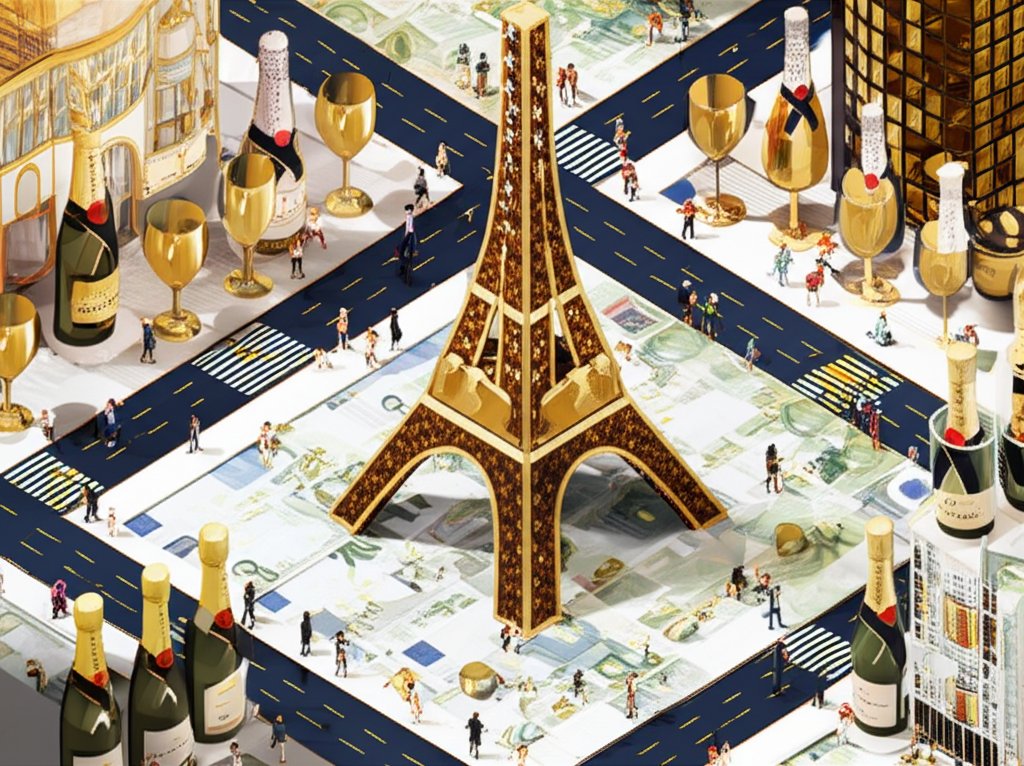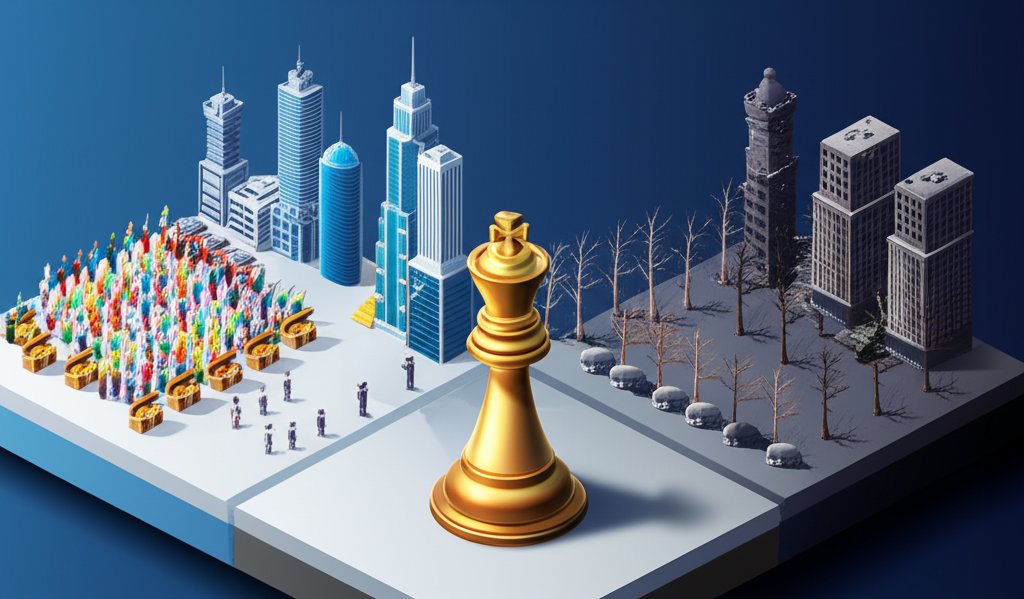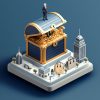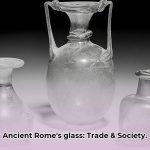Dive into the fascinating bernard arnault biography, a story of strategic brilliance, relentless ambition, and a keen eye for luxury that transformed a family construction business into the world’s largest luxury goods empire, LVMH. From acquiring a near-bankrupt textile firm to orchestrating billion-dollar deals, Arnault’s journey is a masterclass in business acumen and calculated risk-taking.
At a glance:
- Early Days: From engineering school to real estate.
- Dior Acquisition: The pivotal move that launched his luxury empire.
- LVMH Formation: A power struggle and a vision for a luxury conglomerate.
- Brand Building: The secret sauce behind creating “star brands.”
- Controversies: Layoffs and scrutiny regarding his carbon footprint.
From Engineer to Entrepreneur: Early Foundations
Bernard Arnault was born on March 5, 1949, in Roubaix, France, a region historically known for its textile industry. This background, though seemingly distant from the glitz and glamour of high fashion, would later prove surprisingly relevant. He wasn’t born into luxury, but into a family with a solid entrepreneurial spirit.
After graduating from the prestigious École Polytechnique in 1971 with a degree in engineering, Arnault joined Ferret-Savinel, his family’s construction company. He quickly demonstrated his ambition, convincing his father to shift the company’s focus from construction to real estate development. He became president of the company in 1978, and would remain in that role until 1984. These early years honed his business skills and laid the groundwork for future ventures.
The Bold Bet on Boussac and the Rise of Dior
In 1984, Arnault made a bold move that would forever change his trajectory. He acquired Boussac Saint-Frères, a bankrupt textile firm that held a hidden gem: the iconic fashion house Christian Dior. For a symbolic one franc, Arnault took control.
Many questioned his decision. Why invest in a struggling textile company? The answer lay in Dior. Arnault recognized the brand’s immense potential and envisioned it as the cornerstone of a luxury empire. His vision differed from the existing business model, and it’s part of why people are so interested in the bernard arnault biography.
The turnaround wasn’t easy. Arnault implemented drastic measures, selling off Boussac’s other assets and laying off approximately 9,000 workers. These decisions, while controversial, were crucial to restoring profitability and focusing on Dior’s core brand.
LVMH: Creating a Luxury Powerhouse
The late 1980s marked the beginning of LVMH. In 1987, Arnault partnered with Alain Chevalier (of Moët Hennessy) and Henry Racamier (of Louis Vuitton) to create LVMH Moët Hennessy Louis Vuitton. This merger brought together champagne, cognac, and luggage, creating a diverse luxury portfolio.
However, the partnership soon turned into a power struggle. Arnault, with his characteristic ruthlessness, strategically increased his stake in LVMH. By January 1989, he controlled 43.5% of the company’s shares, solidifying his position as Chairman and CEO. He effectively ousted Racamier, demonstrating his unwavering determination to control the future of LVMH.
The Art of the Acquisition: Building a Luxury Empire, Brand by Brand

Under Arnault’s leadership, LVMH embarked on an acquisition spree, gobbling up iconic luxury brands across various sectors. From fashion and leather goods (Givenchy, Fendi) to wines and spirits (Dom Pérignon, Hennessy), perfumes and cosmetics (Sephora, Guerlain), and watches and jewelry (TAG Heuer, Bulgari), LVMH’s portfolio grew exponentially. Today, LVMH controls over 70 prestigious brands.
Arnault’s strategy wasn’t simply about collecting brands; it was about carefully nurturing them. He focused on exclusivity, emphasizing quality over quantity. He famously cancelled damaging licensing deals that diluted brand value. This commitment to excellence is a consistent theme in any bernard arnault biography.
“Profitable Creativity”: Balancing Art and Business
Arnault understood that luxury brands couldn’t thrive solely on heritage; they needed innovation. He fostered a culture of “profitable creativity,” empowering designers to push boundaries while maintaining financial discipline.
He believes in creating “star brands” that are “timeless, modern, fast-growing, and highly profitable.” This philosophy is evident in the success of brands like Louis Vuitton under the creative direction of Nicolas Ghesquière, where cutting-edge designs are balanced with the brand’s classic appeal.
The Tiffany & Co. Saga: A Deal Worth Billions
In 2021, LVMH completed the acquisition of Tiffany & Co. for $16 billion. Bernard Arnaults net worth now has been impacted by strategic acquisitions like Tiffany. The deal, initially agreed upon before the COVID-19 pandemic, faced numerous challenges, including a lawsuit and renegotiations. Ultimately, Arnault secured Tiffany & Co. at a slightly reduced price, adding another jewel to the LVMH crown.
Global Expansion: A Focus on Emerging Markets

Arnault recognized the potential of emerging markets early on. He made significant investments in China, betting on the country’s growing middle class and their appetite for luxury goods. This foresight paid off handsomely, as China became a major driver of LVMH’s growth. The company’s long-term plans likely factor heavily into any analyst’s Arnaults Wealth Forecast for 2025.
Criticisms and Controversies
Despite his success, Arnault has faced criticism regarding his business practices. The mass layoffs at Boussac in the 1980s earned him a reputation for ruthlessness. More recently, his carbon footprint has come under scrutiny.
Arnaults jet use scrutinized. Arnault has since sold his personal jet, a move widely interpreted as an attempt to reduce his environmental impact and avoid further public criticism.
Arnault’s Leadership Style
Arnault’s leadership style is often described as demanding and detail-oriented. He is known for his hands-on approach, personally reviewing designs and marketing campaigns. While some may perceive him as ruthless, his dedication and strategic vision have undoubtedly been instrumental in LVMH’s success. He fosters internal competition between brands, pushing each to excel and innovate.
Key Takeaways from Arnault’s Success
- Visionary Leadership: Recognizing opportunities and taking calculated risks.
- Strategic Acquisitions: Building a diverse portfolio of iconic brands.
- Brand Management: Focusing on exclusivity and quality.
- Financial Discipline: Balancing creativity with profitability.
- Global Perspective: Identifying and capitalizing on emerging markets.
What Can We Learn from Bernard Arnault?
While most people may not be aiming to build a luxury empire, there are valuable lessons to be learned from Bernard Arnault’s journey. His story highlights the importance of:
- Identifying undervalued assets: Recognizing potential where others see only problems.
- Having a clear vision: Knowing what you want to achieve and developing a strategy to get there.
- Being decisive: Making tough decisions when necessary, even if they are unpopular.
- Focusing on quality: Prioritizing excellence over short-term gains.
- Adapting to change: Remaining flexible and responsive to market trends.
Bernard Arnault’s biography is more than just a story of wealth and power; it’s a testament to the power of vision, determination, and a relentless pursuit of excellence. His legacy as the “Luxury King” is secured.










